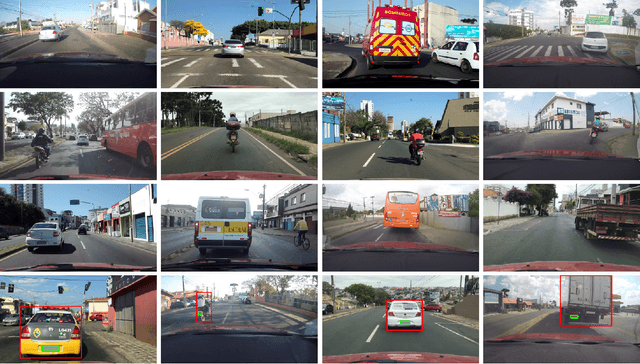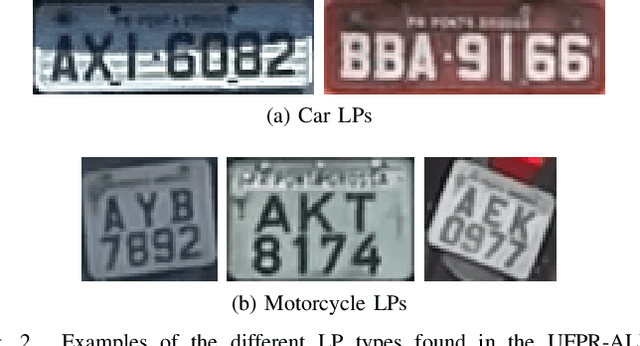Gabriel Resende Gonçalves
A Robust Real-Time Automatic License Plate Recognition Based on the YOLO Detector
Apr 28, 2018



Abstract:Automatic License Plate Recognition (ALPR) has been a frequent topic of research due to many practical applications. However, many of the current solutions are still not robust in real-world situations, commonly depending on many constraints. This paper presents a robust and efficient ALPR system based on the state-of-the-art YOLO object detector. The Convolutional Neural Networks (CNNs) are trained and fine-tuned for each ALPR stage so that they are robust under different conditions (e.g., variations in camera, lighting, and background). Specially for character segmentation and recognition, we design a two-stage approach employing simple data augmentation tricks such as inverted License Plates (LPs) and flipped characters. The resulting ALPR approach achieved impressive results in two datasets. First, in the SSIG dataset, composed of 2,000 frames from 101 vehicle videos, our system achieved a recognition rate of 93.53% and 47 Frames Per Second (FPS), performing better than both Sighthound and OpenALPR commercial systems (89.80% and 93.03%, respectively) and considerably outperforming previous results (81.80%). Second, targeting a more realistic scenario, we introduce a larger public dataset, called UFPR-ALPR dataset, designed to ALPR. This dataset contains 150 videos and 4,500 frames captured when both camera and vehicles are moving and also contains different types of vehicles (cars, motorcycles, buses and trucks). In our proposed dataset, the trial versions of commercial systems achieved recognition rates below 70%. On the other hand, our system performed better, with recognition rate of 78.33% and 35 FPS.
Benchmark for License Plate Character Segmentation
Oct 31, 2016Abstract:Automatic License Plate Recognition (ALPR) has been the focus of many researches in the past years. In general, ALPR is divided into the following problems: detection of on-track vehicles, license plates detection, segmention of license plate characters and optical character recognition (OCR). Even though commercial solutions are available for controlled acquisition conditions, e.g., the entrance of a parking lot, ALPR is still an open problem when dealing with data acquired from uncontrolled environments, such as roads and highways when relying only on imaging sensors. Due to the multiple orientations and scales of the license plates captured by the camera, a very challenging task of the ALPR is the License Plate Character Segmentation (LPCS) step, which effectiveness is required to be (near) optimal to achieve a high recognition rate by the OCR. To tackle the LPCS problem, this work proposes a novel benchmark composed of a dataset designed to focus specifically on the character segmentation step of the ALPR within an evaluation protocol. Furthermore, we propose the Jaccard-Centroid coefficient, a new evaluation measure more suitable than the Jaccard coefficient regarding the location of the bounding box within the ground-truth annotation. The dataset is composed of 2,000 Brazilian license plates consisting of 14,000 alphanumeric symbols and their corresponding bounding box annotations. We also present a new straightforward approach to perform LPCS efficiently. Finally, we provide an experimental evaluation for the dataset based on four LPCS approaches and demonstrate the importance of character segmentation for achieving an accurate OCR.
* 32 pages, single column
 Add to Chrome
Add to Chrome Add to Firefox
Add to Firefox Add to Edge
Add to Edge